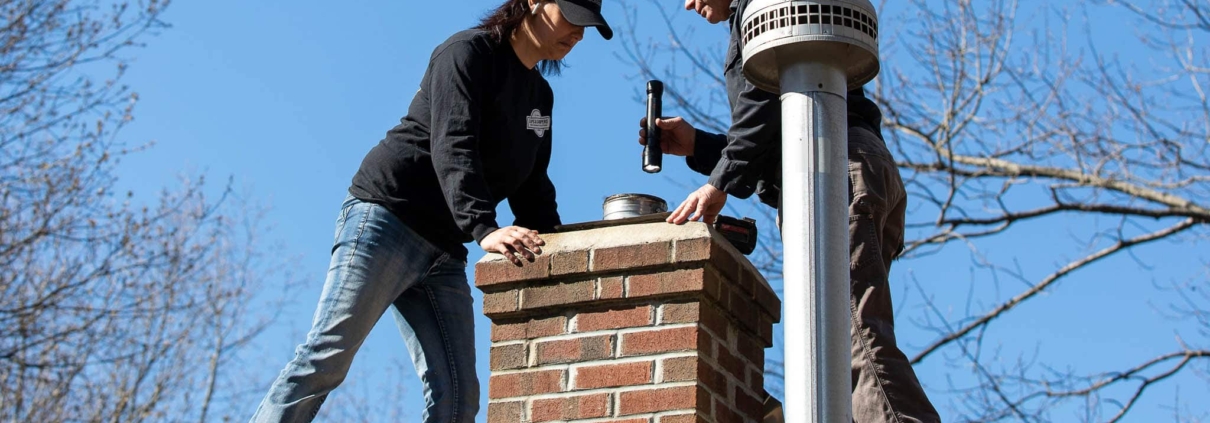Chimney Inspection & Sweeping for Safe Home Heating
Fireplaces provide warmth and comfort during colder months, but they also require regular upkeep to remain safe. Many house fires every year are linked to poorly maintained chimneys. The solution is straightforward: schedule routine chimney inspection and sweeping services. An inspection helps identify cracks, leaks, or blockages, while sweeping removes soot and creosote that can ignite if left unchecked. Together, these services improve safety, increase efficiency, and extend the lifespan of your heating system.
This article covers why chimney care is essential, common issues found during inspections, the main benefits of professional service, average costs, safety measures, and when to call for help.
Why It’s Important
The chimney is an essential part of a home’s heating and ventilation system. Its main function is to direct smoke, gases, and combustion byproducts safely out of the living space. Without proper care, chimneys can become clogged, damaged, or hazardous.
A chimney inspection is important because it allows professionals to spot small issues before they escalate. For example, a cracked liner can allow carbon monoxide to leak into your home, while a damaged cap can lead to water intrusion. Regular inspections also help reduce repair costs by identifying early warning signs.
Common Problems Found in Chimneys
Chimneys are exposed to heat, weather, and constant use, which can lead to hidden damage. Common problems include:
- Creosote buildup: A leading cause of chimney fires if not removed regularly.
- Blockages: Caused by bird nests, leaves, or other debris.
- Cracked flue liner: Allows heat and gases to escape into surrounding walls.
- Water damage: Weakens masonry and leads to leaks.
- Damaged chimney cap: Lets animals, debris, and moisture enter.
- Spalling masonry: Bricks and mortar crumble due to freeze-thaw cycles.
Many of these problems are not visible without a professional inspection.
The Main Benefits of Chimney Sweep & Inspection
Routine chimney services provide several benefits:
- Fire prevention: Regular cleaning removes creosote and lowers fire risks.
- Better indoor air quality: Prevents harmful gases and smoke from leaking into your home.
- Efficiency improvement: Clean chimneys help fireplaces and stoves burn fuel effectively.
- Structural protection: Early detection of cracks and water damage prevents expensive repairs.
- Peace of mind: Ensures your heating system is safe to use during cold seasons.
Costs of Chimney Sweep & Inspection
The price of chimney services varies by location, chimney condition, and type of inspection required. Below is a cost guide:
| Service Type | Average Cost (USD) | Details |
| Basic Chimney Sweep | $150 – $300 | Removes soot and creosote from flue and firebox. |
| Level 1 Chimney Inspection | $100 – $250 | Visual check of easily accessible parts. |
| Level 2 Chimney Inspection | $250 – $500 | Video scan and structural check, often for real estate. |
| Chimney Cap Replacement | $150 – $350 | Protects chimney from animals, water, and debris. |
| Masonry Repairs | $400 – $1,500+ | Depends on severity of brick or mortar deterioration. |
Key Features of Professional Service
When hiring a chimney service, expect these professional features:
- Certified technicians: Look for CSIA (Chimney Safety Institute of America) certification.
- Advanced tools: Professional-grade brushes, vacuums, and cameras.
- Detailed inspections: Video scanning for hard-to-reach areas.
- Clear reports: Documentation of issues and repair recommendations.
- Customer education: Professionals should explain findings and give preventive advice.
Safety Considerations
Chimney maintenance is about more than cleaning—it’s about protecting your home. Follow these safety steps:
- Schedule a chimney inspection once a year before heavy fireplace use.
- Burn seasoned hardwoods only; avoid green or treated wood.
- Install carbon monoxide detectors in key areas of your home.
- Use a sturdy screen or glass door to contain sparks.
- Repair cracks and damaged masonry as soon as possible.
- Ensure chimney caps are intact to block moisture and pests.
Preventive steps lower risks and keep your fireplace safe and functional.
Get Help When You Need It
Some signs mean you should call a chimney professional immediately:
- Smoke backs into the room instead of venting outside.
- Persistent odors coming from the fireplace.
- Pieces of brick, tile, or soot falling into the firebox.
- Difficulty starting or maintaining fires.
- Stains or damp patches on walls near the chimney.
Delaying service can lead to costly repairs and dangerous situations. Always act quickly if these signs appear.
FAQs
Q1: How often should a chimney be swept?
At least once a year, or more frequently if you use your fireplace often.
Q2: Can I sweep my own chimney?
Surface cleaning is possible, but thorough sweeping requires professional tools and training.
Q3: What is the difference between Level 1 and Level 2 inspections?
Level 1 is a visual check, while Level 2 includes video scanning and is recommended during home sales or after damage.
Q4: How long does chimney sweeping take?
Typically between 45 minutes and 2 hours.
Q5: What type of wood is best for burning?
Dry, seasoned hardwoods such as oak or maple. Avoid softwoods and treated lumber.
Conclusion
A fireplace is a valuable feature in any home, but it requires care to remain safe. Routine chimney sweep and inspection services prevent fires, protect indoor air, and extend chimney life. Annual chimney inspection ensures hidden issues are caught early, while sweeping clears out dangerous buildup.
Investing in preventive maintenance is always less costly than repairing major damage after the fact. By scheduling professional services, you can enjoy your fireplace with confidence, knowing your home heating system is safe, clean, and efficient.
Read more : Chimney sweep



Leave a Reply
Want to join the discussion?Feel free to contribute!